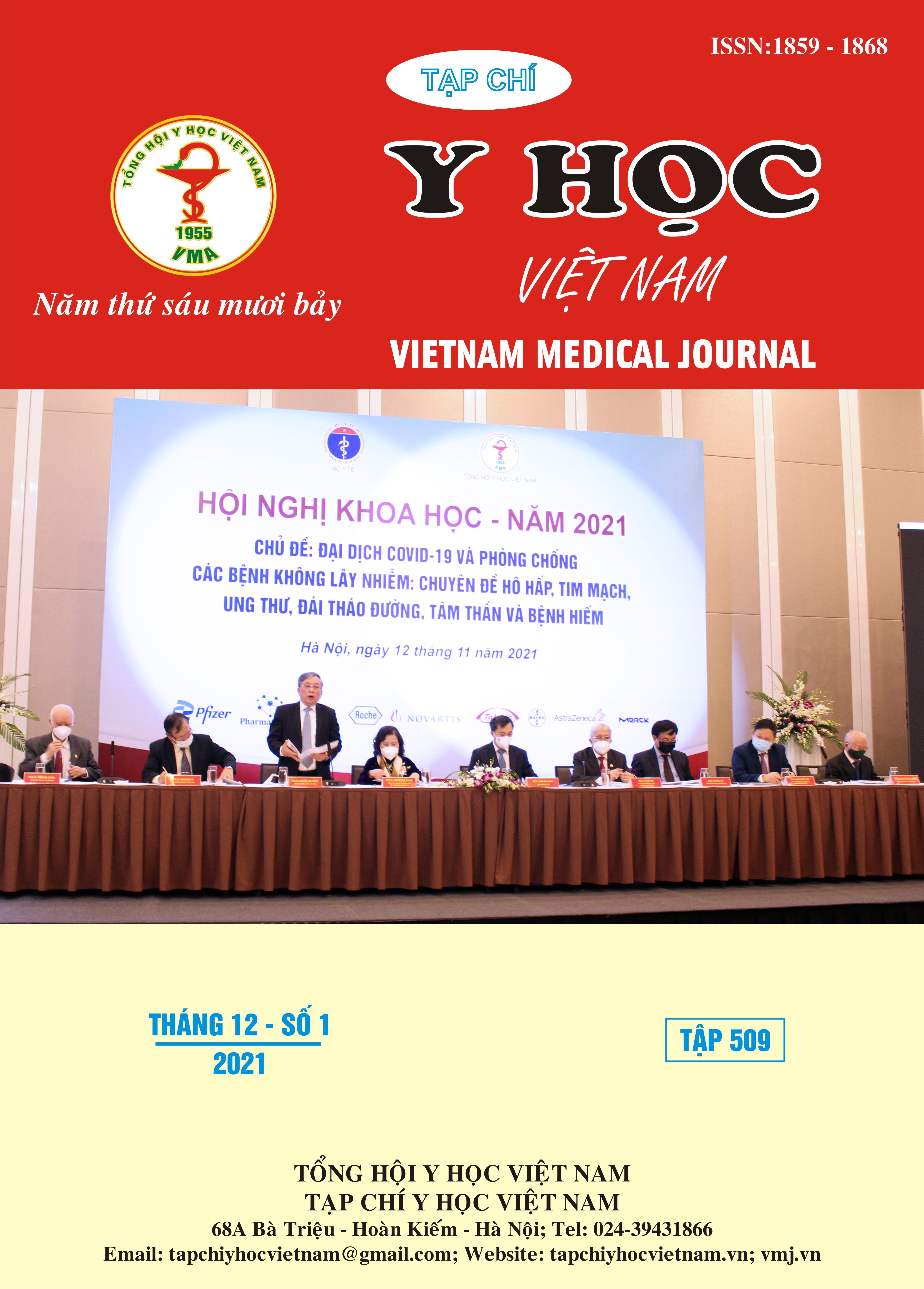PHÂN TÍCH MỘT SỐ YẾU TỐ LIÊN QUAN ĐẾN CHỈ ĐỊNH ĐẶT NỘI KHÍ QUẢN Ở BỆNH NHÂN NHỒI MÁU NÃO DIỆN RỘNG BÁN CẦU
Nội dung chính của bài viết
Tóm tắt
Mục tiêu: Phân tích một số yếu tố liên quan giữa đặc điểm lâm sàng, hình ảnh học và chỉ định đặt nội khí quản (NKQ) ở bệnh nhân nhồi máu não diện rộng bán cầu. Đối tượng nghiên cứu: 69 bệnh nhân nhồi máu não diện rộng bán cầu, trong đó 38 bệnh nhân không đặt NKQ, 31 bệnh nhân có đặt NKQ điều trị tại Trung tâm thần kinh Bệnh viện Bạch Mai từ tháng 8/2020-7/2021. Phương pháp nghiên cứu: Mô tả cắt ngang. Kết quả: Tuổi trung bình của nhóm bệnh nhân nghiên cứu là 68,41±11,65 tuổi, nam giới chiếm 60,9%. Các triệu chứng lâm sàng khi khởi phát thường gặp là: liệt vận động (100%), RL ngôn ngữ (97,1%), đau đầu (30,4%), buồn nôn/nôn (30,4%), rối loạn ý thức (60,9%), quay mắt quay đầu (46,4%), rối loạn cơ tròn (47,8%). Điểm NIHSS trung bình khi nhập viện là 19,0 ± 3,84 điểm, điểm Glasgow trung bình lúc nhập viện là 12,9 ± 1,36 điểm. Điểm ASPECT lúc nhập viện là 4,59 ± 1,01 điểm; mức độ đè đẩy đường giữa trung bình là 4,48 ± 3,97 mm; có 24,6% bệnh nhân có chuyển dạng chảy máu. Các yếu tố liên quan độc lập đến chỉ định đặt NKQ có ý nghĩa thống kê bao gồm: RL ý thức lúc khởi phát (OR: 20,83, 95%CI: 1,18 – 36,78), quay mắt quay đầu (OR: 4,41, 95%CI: 1,34 – 14,49), điểm NIHSS lúc vào viện ≥ 20 điểm (OR: 39,48, 95%CI: 1,63 –95,53), di lệch đường giữa ≥ 5 mm (OR: 13,65, 95%CI: 2,10 – 88,90). Kết luận: Nhồi máu não diện rộng bán cầu là một dạng nặng của đột quỵ nhồi máu não với tỉ lệ tàn tật nặng và tử vong cao. Các yếu tố có liên quan độc lập đến chỉ định đặt NKQ ở bệnh nhân nhồi máu não diện rộng bán cầu bao gồm: RL ý thức lúc khởi phát, quay mắt quay đầu, điểm NIHSS lúc vào viện ≥ 20 điểm, di lệch đường giữa ≥ 5 mm.
Chi tiết bài viết
Từ khóa
Nhồi máu não diện rộng bán cầu, nội khí quản
Tài liệu tham khảo
2. Gupta P, Prasad K, Kumar A, Kumar P, Bhatia R, Tripathi M. Clinical predictors and outcome of patients of acute stroke requiring ventilatory support: A prospective hospital based cohort study. Journal of the Neurological Sciences. 2014;337(1-2):14-17.
3. Santoli F, De Jonghe B, Hayon J, et al. Mechanical ventilation in patients with acute ischemic stroke: survival and outcome at one year. Intensive Care Med. 2001;27(7):1141-1146.
4. Popat C. Outcomes in patients with acute stroke requiring mechanical ventilation_ Predictors of mortality and successful extubation. 2018 :19.
5. Schielke E, Busch MA, Hildenhagen T, et al. Functional, cognitive and emotional long–term outcome of patients with ischemic stroke requiring mechanical ventilation. J Neurol. 2005;252(6):648-654.
6. Walcott BP, Miller JC, Kwon C-S, et al. Outcomes in Severe Middle Cerebral Artery Ischemic Stroke. Neurocrit Care. 2014;21(1):20-26.
7. Oanh TT. Nghiên cứu đặc điểm lâm sàng, cận lâm sàng và một số yếu tố liên quan của bệnh nhân nhồi máu não cấp trên lều tiểu não có thông khí cơ học. 2018 :27.


